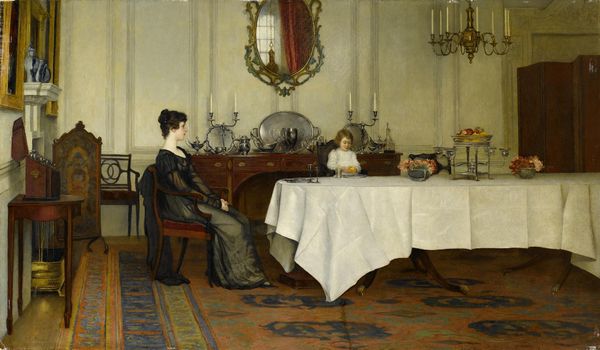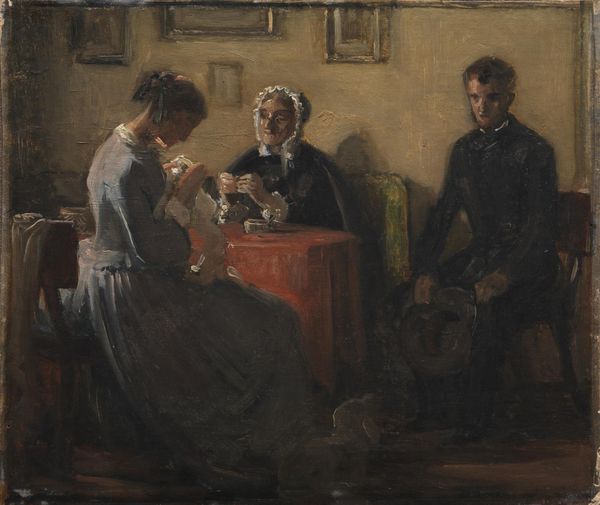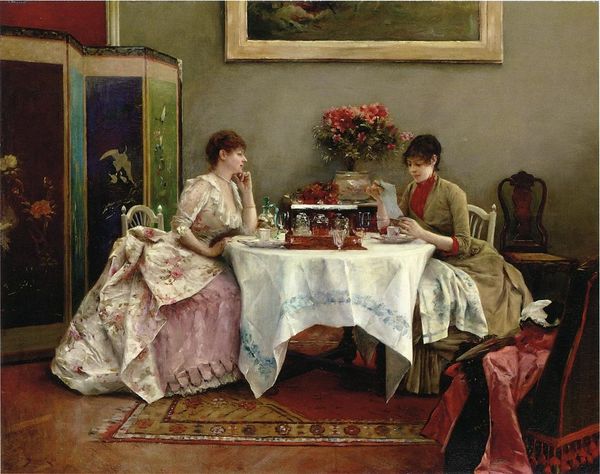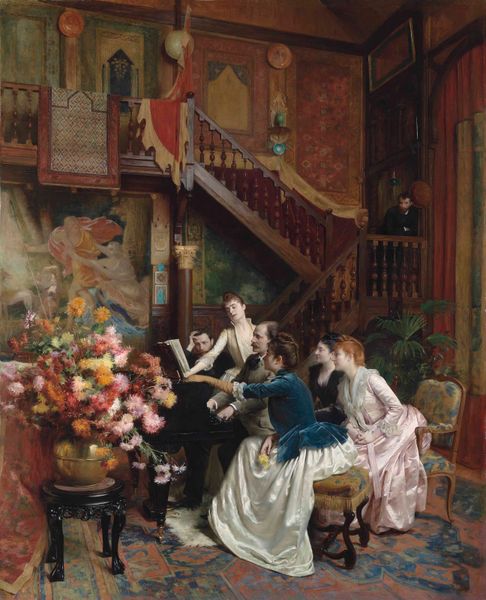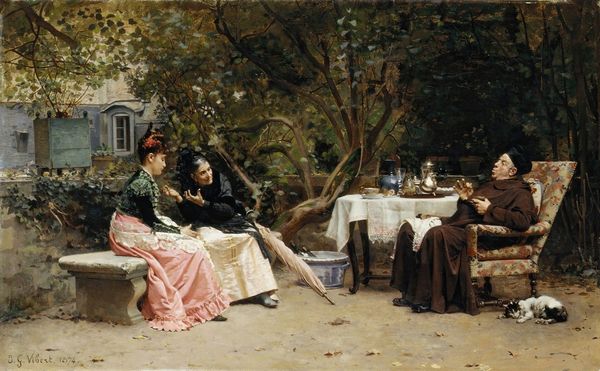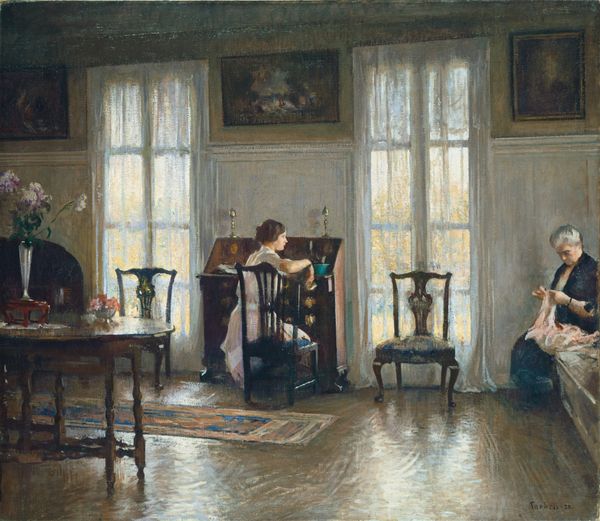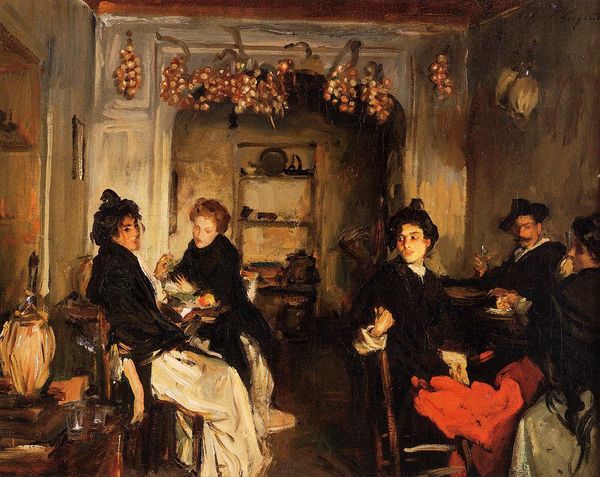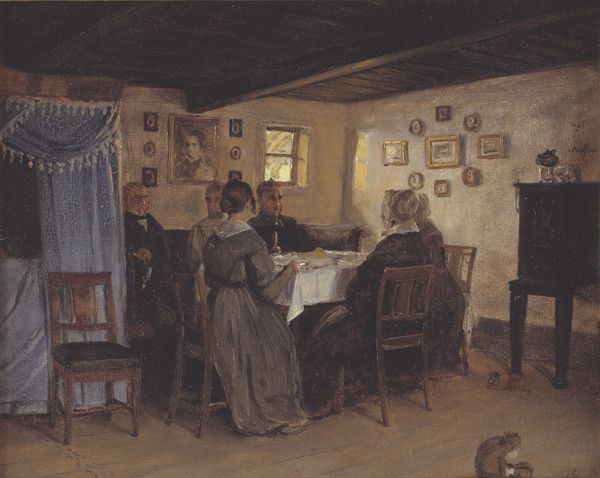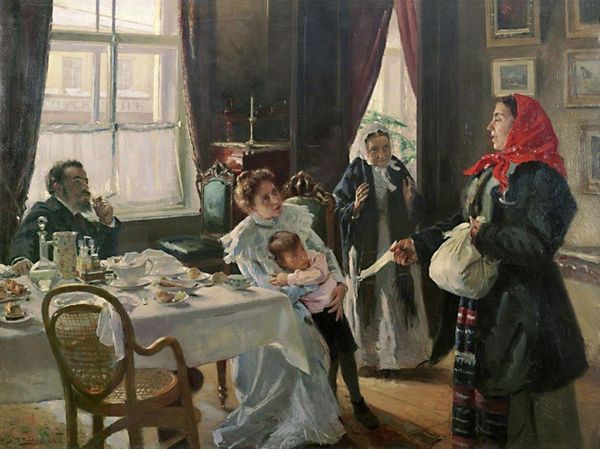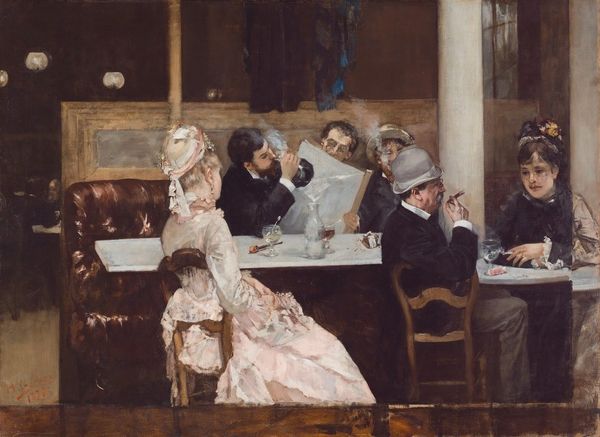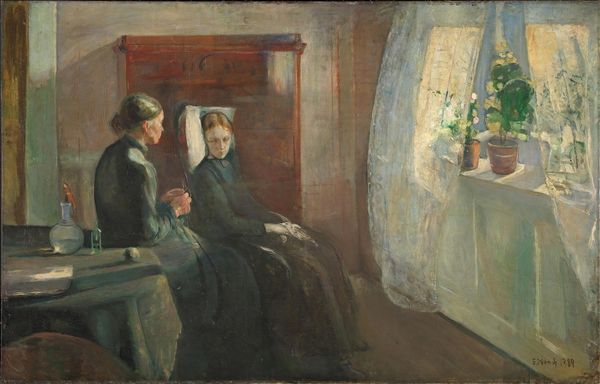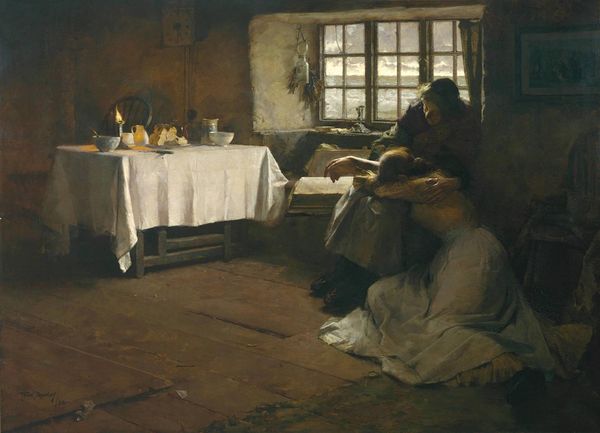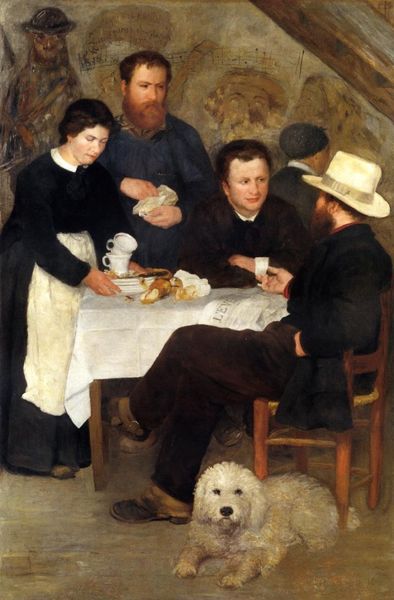
#
photo restoration
#
building site documentary shot
#
culture event photography
#
character photography
#
showhome propping
#
person holding a poster
#
portrait character photography
#
fine art portrait
#
celebrity portrait
#
exhibition
Copyright: Public domain
Editor: Here we have "Between Two Fires," painted in 1892 by Francis Davis Millet. It's an oil on canvas, and it strikes me as very theatrical, like a scene from a play. The composition, with its strong central figure flanked by women, has a real narrative tension. What do you see in this piece? Curator: Absolutely, the theatricality is key. Millet positions us within a staged drama of Puritan life. Look closely; this isn’t just historical genre painting. It's about power dynamics, isn't it? Consider the woman on the left, turned away, seemingly excluded from the central exchange. What does her body language suggest to you? Editor: Discomfort, maybe? A feeling of being left out? Is Millet commenting on the limited roles for women within Puritan society? Curator: Precisely. And think about the title, "Between Two Fires." This man is caught between them but consider where women of that era found themselves when their husband brought "guests" home unannounced. Millet isn’t merely depicting history; he's subtly critiquing it through a lens of gender and social dynamics, right? Editor: It’s interesting how the scene appears mundane on the surface, but the power imbalances are simmering underneath. I wouldn’t have considered that at first glance. Curator: The domestic space becomes a site of tension, reflecting broader societal constraints, like when Roe was overturned this past summer. That sort of setback for women to control what they want to do. Where do you feel this fits in, now that we discussed all the potential contexts and themes here? Editor: I guess what stands out is that it transcends just a snapshot of the past. It raises important questions about power, gender, and societal expectations that still resonate today. The message can evolve with the times. Curator: Yes, and perhaps, in acknowledging these visual tensions, we can better understand the continuing need for critical examination and change in our own time.
Comments
No comments
Be the first to comment and join the conversation on the ultimate creative platform.
